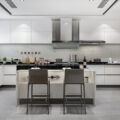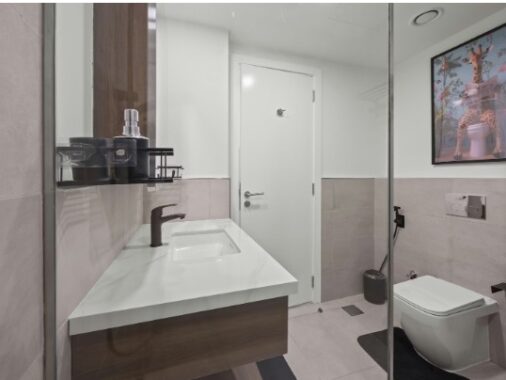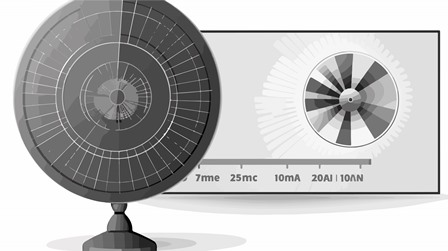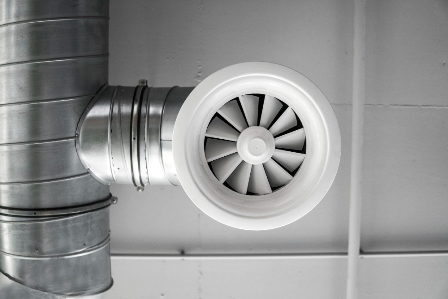Defining an Irregular Mirror
Irregular—or free-form—mirrors abandon strict geometry. Instead of the predictable rectangles, circles, or ovals, they curl and meander like water or polished stones. You will see them described as amoeba, pebble, or simply asymmetrical mirrors. Their fluid lines inject movement and sculptural interest where hard-edged furniture can feel static.
Why Designers Can’t Get Enough of Them in 2025
- Distinctive character – One statement piece instantly separates a room from every look-alike Pinterest board.
- Softening straight lines – Curves break up the boxiness of cabinets, tables, and doorways.
- Versatility across styles – Boho eclectic, pared-back Scandinavian, and even strict minimalism all benefit from a single organic accent.
- Social-media fuel – Mentions of “amoeba mirror” and “asymmetrical wall decor” have tripled on Instagram and Pinterest in the last 12 months, pushing retailers from Urban Outfitters to Anthropologie to expand their ranges.
Shapes Stealing the Spotlight This Year
| Shape | Signature Look | Best Locations | Design Impact |
| Amoeba curves | Flowing, almost liquid outline | Bathrooms, bedside nooks | Adds gentle motion |
| Pebble silhouettes | Reminiscent of river stones | Japandi & Scandi lounges | Works well in clusters |
| Asymmetric vanity forms | Off-center yet balanced | Dressing tables & make-up corners | Modern upgrade on classic vanities |
| Full-length free-form | Tall, undulating edges | Bedrooms, narrow halls | Creates instant drama & vertical lift |
| Round-edge hybrids | Abstract shape with partial circles | Living-room feature walls | Marries whimsy with order |
Picking the Perfect Frame
- Natural wood trims – Earthy, calming; ideal for neutral palettes.
- Frameless glass – Ultra-minimal; lets the silhouette do the talking.
- Slender metal edging – Black, bronze, or brushed gold for contemporary or industrial schemes.
- Ornate decorative borders – Gilded leaf or carved detail suits vintage and maximalist rooms.
Vastu-Aligned Placement Tips
| Direction | Effect | Key Advice |
| West wall | Acceptable | Ensure it doesn’t reflect the bed or clutter. |
| South wall | Avoid | Believed to disturb energetic balance. |
| South-East | Networking boost | Keep reflections tidy and uplifting. |
| North-West | Career support | Favors decisive thinking. |
| Entrance lobby | Do not face the main door | Mount on a side wall to bounce light, not energy out. |
| Bedrooms | No direct bed reflection | Position inside wardrobes or on side walls. |
Styling Ideas Room-by-Room
Living Room
Command attention. Hang an oversized organic mirror above the sofa or mantel for an instant focal point. Position opposite windows to double natural light, or curate a gallery wall mixing several shapes and frame textures.
Bedroom
Replace the predictable rectangle over a dresser with a soft-edged mirror. Lean a tall, full-length version beside the wardrobe for an editorial vibe, but keep reflections away from the bed for restful energy.
Hallways & Entrances
Tall free-form mirrors elongate a narrow corridor. At the entry, flank a console with an abstract piece—it welcomes guests without mirroring the door directly.
Dining & Kitchen
A dining-room mirror can bounce candlelight for an intimate glow. In compact kitchens, a small irregular mirror behind open shelves offers an unexpected depth boost.
From Subtle to Statement: Decorative Directions
- Simple & Minimal – Frameless or thin-edged pieces suit Japandi and pure modern interiors.
- Fancy & Ornate – Sunburst gold or carved wood frames elevate classic or luxury spaces.
Mirror-as-Art Installations
Treat mirrors like wall sculpture: cluster different sizes, overlap frames, or mix with sconce lighting and houseplants. The reflected greenery and glow create a living artwork that shifts throughout the day.
Conclusion
Free-form mirrors blur the boundary between function and art. Whether you’re stretching a tight hallway, softening a minimalist lounge, or mindfully following Vastu, their organic silhouettes add intent and individuality to any room. When in doubt about “which side” to hang a mirror—let your design instinct (and a gentle touch of asymmetry) guide the choice.
Ready to sculpt your space? Explore irregular mirrors that marry reflection with artistry.
FAQs
1. What purpose does an asymmetrical mirror serve?
It delivers visual interest, creates a focal point, and scatters natural or artificial light to enliven interiors.
2. Are free-form mirrors appropriate for compact rooms?
Yes. Their odd shapes draw the eye outward, making small areas feel larger.
3. Which décor themes pair best?
Boho chic, minimalist, Scandinavian, Japandi, and modern contemporary all embrace organic mirrors.
4. Can I follow Vastu with irregular mirrors?
Absolutely—mount them on North or East walls and avoid reflecting beds or main doors.
5. Prime hanging spots?
Above consoles, beside bedside tables, over vanities, or at the end of hallways and entryways.
6. Frame material recommendations?
Warmth comes from wood, contrast from metal; frameless designs keep things ultra-clean.
7. Do full-length versions exist?
Yes—they’re increasingly popular in wardrobes, bedrooms, and slender corridors to add height and light.







